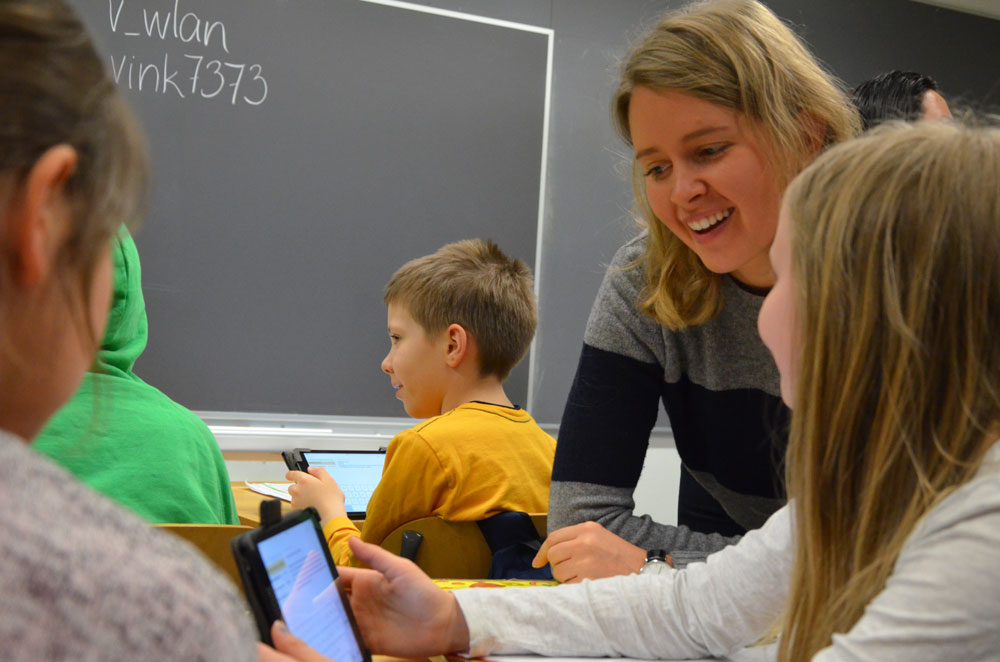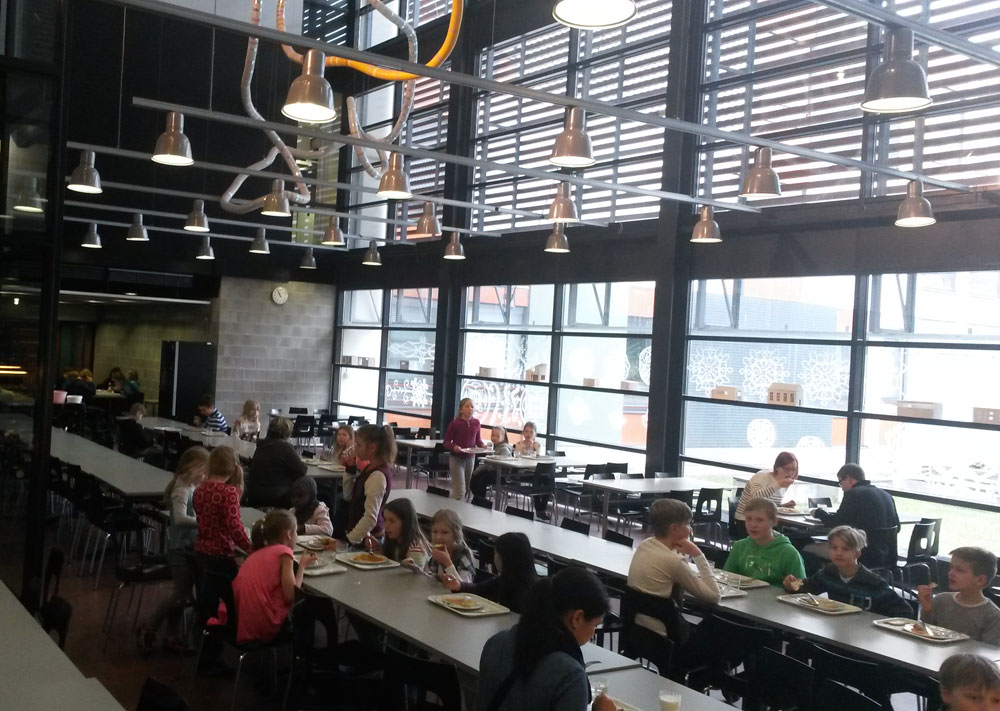Reopening of schools seems to be less about the teachers, parents and students and more about desperate attempts to rescue our failing and unsustainable capitalist economy
The most startling first impression of the Finnish basic education system is not how different it is to South Africa’s, but how similar.
The Viiki Teacher Training School of Helsinki University that I and eight other journalists – mostly from developing countries such as Peru and Indonesia – visited earlier this month could have been any well-resourced former model C school in South Africa.
Its daily timetable and the subjects it offers are very similar to those of any public school in South Africa.
This was a shock because Finland’s education system is rated the best in the world and leaves South Africa in the dirt in global education rankings.
I expected fireworks: a game-changing display of state-of-the-art technology in spaces that flowed with symmetry and Scandi-design furniture, oozing critical thinking and creativity.
But I found more tradition at the school than I expected: children sit in rows at desks in classrooms built side by side around a central cafeteria. The teacher is still the main focus and though some classes use iPads, others don’t.
The buildings are modern, clean and well lit. Colourful jackets hang on rows of wall hooks, abstract black-and-white art decorates the corridors of the upper classes and paintings of superheroes decorate the walls next to the lower classes. There are white busts of literary giants and shelves packed with books in the library. The atmosphere is orderly and calm.
We visited the school at the invitation of the Finnish ministry for foreign affairs for a three-day “educational know-how media visit”. And Finland certainly knows how – the darling of the basic-education world, it regularly scores top marks or features in the top 10 in global assessments.
In the 2011 Progress in International Reading Literacy study, the literacy score of Finnish fourth-graders was the second-best out of 49 countries.
The grade five pupils in South Africa who participated in the same test achieved a score described as “the lowest for benchmarking participants”.

But the reasons for Finland’s education success are not superficial: they are inextricably linked to its status as a developed country and welfare state and the attitudes of its citizens towards equality and the power of education to build a peaceful, stable and prosperous society.
A Finn will gladly break the standoffish, Scandinavian stereotype to speak about the value of teachers.
Teachers are held in high esteem and relish the moral support that flows from this. Although they don’t get big salaries – a junior teacher earns what a mid-range civil servant gets – the high regard with which the teaching profession is viewed is one of the factors that make it so attractive.
Petra Packalen of the Finnish National Board of Education told our group that the 2013 Organisation for Economic Co-operation and Development teaching and learning international study showed almost 60% of Finns think “the teaching profession is valued in society”, ranking second-highest out of 20 countries, which mostly scored under 30%.
All teachers have to have a master’s degree in education and, with a limited number of these course openings available, competition is intense and places go to only the best candidates.
Only 10% of the 3 000 people who apply every year to do their master’s in education are accepted, says Marja Martikainen, vice-principal of the Viiki School.
Attitude
Jari Lavonen, head of teacher education at Helsinki University, says they select teachers for the master’s programme largely by assessing their values. “We want to know if they understand a teacher’s role … What is their attitude? What are their interaction and collaboration skills?”
A 28-year-old primary school teacher at the Viiki School, Tea Vuorinen, says that with her good matric marks she had a choice to study anything she wanted but chose teaching because she wanted to do “something meaningful”.
“It’s harder to get into teaching school than it is to get into medical school,” she says. “Teaching is in line with my values. I like to see my class working together towards something. In society it is important to work together. This is what I want to teach.”

Tea Vuorinen, a primary school teacher at the Viiki School, says she chose teaching over medicine. (Quynh Trung, Tuoi Tre)
Another reason the profession is so popular is the level of freedom teachers are given to interpret the curriculum. Education policy is the responsibility of the ministry of education and culture, and a national agency, the Finnish National Board of Education, is responsible for implementing the policy aims.
But the allocation of funding, the recruitment of staff and local curriculums is the responsibility of the 300-odd municipalities and approximately 3 000 schools. Teachers have abundant pedagogical autonomy: they decide their own teaching methods and the textbooks and materials they use.
Martikainen says the core curriculum promulgated by the ministry is just “a guideline”. “When the teachers get the curriculum document, there is even an e-tool which lets them write in blocks next to the descriptions how they are going to do it differently.”
School inspectors were abolished in the 1990s and there is no external assessment of teachers. The visiting media group kept asking various government officials and academics: “How do you know the teacher is doing a proper job?”
“We trust them,” we were told, over and over again.
Culture of trust
The difference between the Western model and the Finnish system, Packalen says, is that the Western system relies on “consequential accountability and evaluation by inspection” whereas the Finnish system relies on “a culture of trust in teachers’ and headmasters’ professionalism in judging what is best for students”.
This was not a good enough answer for the journalists who, by then, had swapped many scandalous stories from their respective countries about badly skilled teachers who bunked classes, abused pupils and failed to teach the curriculum at all.
Recent research found that 79% of South African grade six maths teachers have a content knowledge level below the grade six to seven level band.
Lavonen says there is a strong focus on self-evaluation by schools and teachers. And when the national monitoring office tests pupils’ outcomes they compare these with teachers’ assessments of pupils, too, he says, to make sure they are within the same parameters.
One cornerstone of the system is an environment of light assessment and noncompetitiveness. There is no annual national assessment of outcomes, only matric assessments, and assessments of subjects only happen every few years.
Unlike South Africa, Packalen says, in Finland “subject assessments are just for evidence-informed development, for policymakers to know the differences between genders, pupils’ backgrounds … not to control or sanction anyone”.
There are myriad reasons why South African media are littered with stories of rapist teachers and teacher strikes. Not least of them is a lack of government-provided training and abominable work environments.
But without interventions in at least these two critical areas, the status of the teaching profession in South Africa will never mend and the country will miss out on the kind of education bounty that Finland is reaping.
Victoria John’s trip to Finland was sponsored by the Finnish ministry for foreign affairs
SA’s school system out in the cold as state fails its children
COMMENT
There are many reasons why Finland’s education system is miles ahead in the battle to prepare children to live meaningful, informed and productive lives. Its national attitude to education is perhaps the biggest contributor.
Finland firmly believes that education is the path to success and acts on it. The country adequately satisfies the needs of its people to be employed, fed, housed and to enjoy basic services such as access to water, electricity and healthcare.
The unemployed get an allowance and every Finnish parent gets a grant per child. Education is free for everyone at all levels.
Every high school child gets a free meal at school and transport for pupils living far away is free. There are no private schools. The people’s taxes pay for schools and as Suvi Sundquist, a manager at the learning tools company Tekes, told the Mail & Guardian: “This is a welfare state and you can’t think of the success of our education system without thinking about that. We are taught from young that everyone is equal … and education obviously promotes equality.”
The permanent secretary of the ministry of education and culture, Anita Lehikoinen, told our visiting media group: “Research shows that three-quarters of the Finnish population believe the country’s comprehensive school system … creates a foundation for wellbeing”.
This suggests that success in education is a process and it is strongly supported by the Finns.

The cafeteria at the Viiki Teacher Training School. (Quynh Trung, Tuoi Tre)
In the wake of the dismantling of apartheid, countless South African politicians have trotted out the true but tired mantra that education is the tool by which people can uplift themselves.
It’s tired because government does not match its words with action: using this tool is very difficult for millions of children who attend schools with classrooms that are dangerously dilapidated and don’t have enough teachers, desks, chairs and textbooks.
Without the basics of education in place, the gap between education as a tool and the kind of success spoken about by South Africa’s leaders is a chasm.
Even if a well-resourced education was within reach, there are a host of socioeconomic barriers blocking the way for millions of disadvantaged, mostly black, children. Thousands walk tens of kilometres every day to get to school and millions don’t get a proper meal when they get home.
Teenage pregnancy, substance abuse and the need to look after siblings or sick relatives make it hard for many to go to school every day. These are only some of the reasons why half of South African pupils drop out of school between grades one and 12.
South Africans’ right to education differs from other rights in that it is immediately realisable. Unlike other rights, such as housing and healthcare, the right to education is not qualified by available resources or subject to progressive realisation.
The Constitutional Court has ruled on this, but education is still being used as a bargaining chip by powerful teacher unions, corrupt politicians and businesspeople, and not enough is being done by government to stop the ensuing mismanagement and maladministration.
Education may get the biggest single slice of the budget pie but millions of pupils still have to overcome a host of problems at home to put on a school uniform and get to school every day.
When tyres are burned in the streets in protest, it is mostly not in the name of a lack of access to education, but lack of basic services and jobs.
Education may be on government’s top priority list, but thousands of people are abandoning public schools and putting their children in expensive private schools, if they can.
The government is failing its people in access to basic services and education. In this poisonous environment, a strong national stance on equality and the thing that builds it – a quality education system – will never take root. – Victoria John